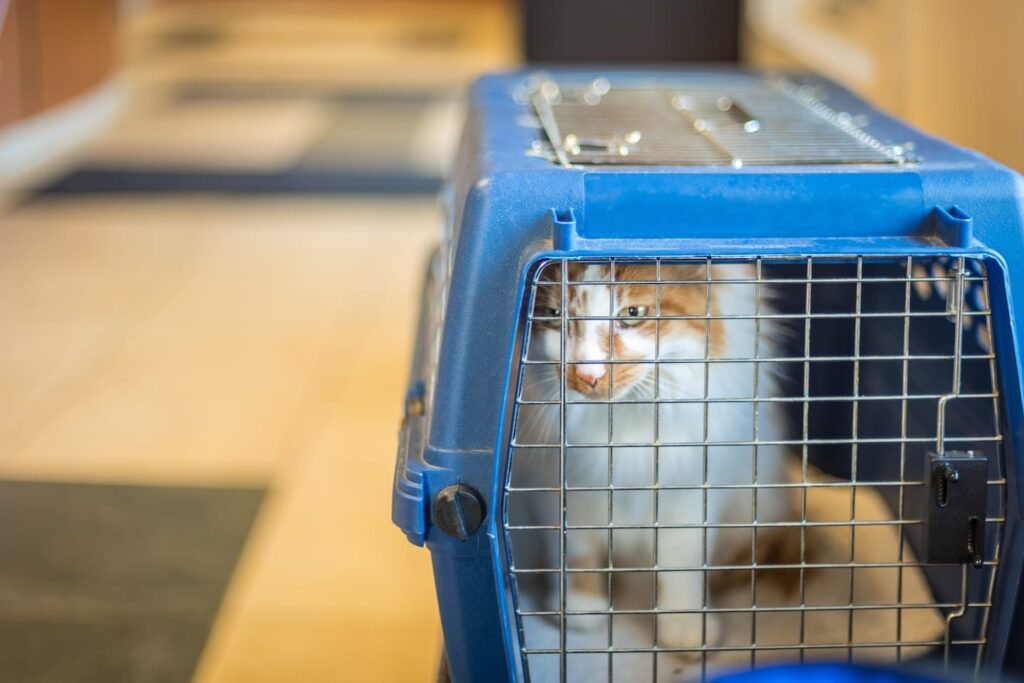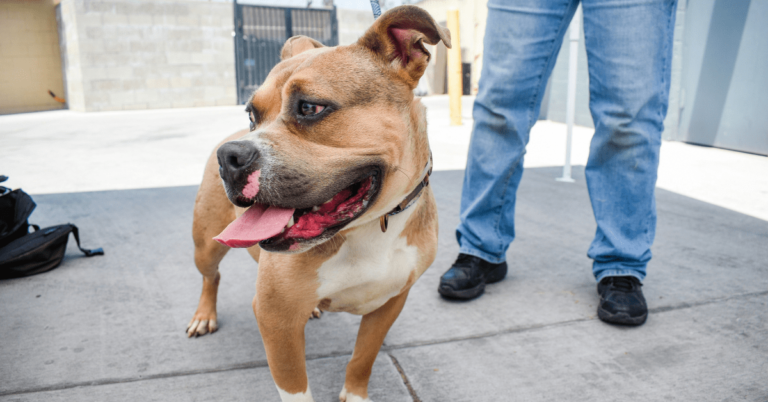Earthquake Safety for Pets


What would you do if you experienced an earthquake today? If you live in an area prone to earthquakes, the possibility of “The Big One” is always at the back of your mind. Unlike tornadoes, hurricanes and other natural disasters, earthquakes strike without any warning, making them all the more scary. The best and only thing you can do is be prepared. Check out this guide to be prepared if, heaven forbid, there was an earthquake today.
During an Earthquake: Drop, Cover and Hold On
Any animal, when frightened, may bite or scratch in order to flee to safety, so it is very important that you do not try to restrain your pet. If you are outside walking with your dog when an earthquake strikes, drop to the ground before the shaking knocks you down and crawl to an open area away from trees, power lines and buildings. When the ground begins to shake, your dog will most likely panic and try to escape to safety. Hold on to the leash as best as you can, but if your safety is at risk you may need to drop the leash and let your dog find safety on his own. After you drop to the ground and are in a safe location, cover your head and neck with your hands and arms and hold on to something. Animals are very good at finding safety and hiding until the danger has passed, so you can look for your pet immediately after the shaking stops.
If your pet is in a carrier or a crate, leave them inside. They are much safer inside where they are protected from falling debris. If your pet’s crate or carrier is light enough, you can carry or drag it with you to safety.
If you are in your home when an earthquake starts, let your animal run and find a safe place to hide. Cats will most likely not tolerate being picked up or held during an earthquake, but some dogs might, so if your dog is able to be handled, drop to the ground with your pet, crawl underneath a desk or table and cover your head and neck. Hold on to the leg of the desk or table if you can. If your pet struggles to get away or becomes aggressive, let them go and find safety on their own. Your safety should always come first.
Many people believe that pets are capable of predicting earthquakes. Some pets may begin displaying behavior changes several minutes or even days prior to an earthquake, such as unprovoked anxiety, stress, pacing or increased activity. This phenomenon is called Seismic Escape Response and may be linked to a dog’s ability to hear high-frequency sounds of rocks moving and breaking beneath the earth. However, you shouldn’t rely on your pet to tell you when to prepare for an earthquake. Start preparing today!
Before an Earthquake Strikes: Prepare Today to Be Safer Tomorrow!
Have your pet microchipped, and don’t forget to register it! Should your pet escape and flee to safety during an earthquake, you have a much better chance of being reunited with them if they are microchipped and your information is up to date. Also be sure to check the fit of your pet’s collar regularly to ensure that it will not slip off should your animal become startled and struggle to get away. You should be able to slip just two fingers underneath their collar when it is fitted correctly – no more, no less. Also be sure your pet’s collar has current ID tags attached.
Keep your pet current on their vaccinations. During a natural disaster, stagnant water, poor sanitation and rotting debris create an excellent breeding ground for bacteria and may increase your pet’s chances of getting sick. By keeping vaccinations current, your pet is more likely to stay healthy, even in unsanitary living conditions and under high stress levels that might compromise their immune system.
Train and socialize your pet. If your animal should escape, a pet that is well socialized with people and new situations will be easier for an animal control officer or a Good Samaritan to rescue than a flighty frightened pet who rarely goes outside. A well-socialized pet will also handle stress better than an under-socialized pet. Cats can be harness-trained and walked outside on leash periodically if they live strictly indoors, but make sure that your cat’s harness is fitted well, as cats can become quite acrobatic when startled. Dogs can enroll in basic obedience classes and socialized regularly by visiting new places such as dog parks, pet stores, outdoor cafes, etc.
Create a disaster plan and assign a local meeting place that your family can go to should your home become unsafe and phone lines are down. Also make plans for your pet should you be unable to take them with you. In your disaster plan, have several phone numbers and addresses of local boarding facilities, veterinary clinics, daycare facilities and animal shelters that will accept your pet in an emergency and find out what their disaster protocols are. If leaving your pet at home is your only option, provide a friend or trusted neighbor with a set of your house keys and a copy of your disaster plan, along with instructions on how to care for your pet in your absence.
Create a pet first aid kit for your home, and one for your car if you travel with your pet often. Include basic pet first aid items, as well as other useful disaster materials. Pack blankets and towels and some form of confinement for your pet in the form of a crate, play pen, carrier or yard stake. Also include pet waste clean-up supplies like paper towels, waste bags, and cleaning solution, and copies of your pet’s medical records with current photos. Your pet’s disaster supplies should be stored in such a way that you can an easily “grab it and go.” For cats, their supplies can be stored in a carrier large enough to place a small litter box inside with enough space for them to lie down comfortably. Dog supplies can be stored in a waterproof duffel bag next to their crate, or inside the crate/carrier itself.
Pet First Aid Kit Supplies
- Adhesive Tape
- Antibacterial Ointments
- Blankets
- Blunt tipped scissors
- Cotton balls
- Cotton swabs (Q-tips)
- Diarrhea medicine (for pets)
- Digital rectal thermometer
- Tweezers
- First aid book for pets
- Gauze & gauze pads
- Hydrogen peroxide
- Instant cold/ hot packs
- Medicine droppers
- Muzzles
- Non-stick paper tape and waterproof tape
- Plastic storage containers
- Razor blade (for snake bites)
- Rubber tubing or cloth for tourniquet
- Self-adhesive bandage
- Sterile wound wash
- Vaseline
- Additional items:
- Collar and leash
- Familiar toys
- Food and water bowls
- 1-week supply of non-perishable food and water
- 1-week supply of pet’s medications (if any)
- List of pet-friendly hotels/kennels/emergency vet clinics
- Litter box and litter
- Manual can opener
- Veterinary records in sealed waterproof container
If putting together your own first aid kid sounds like a daunting task, you can also find preassembled kits for purchase online. And remember: Inspect your kit regularly to replace expired food and medications.



